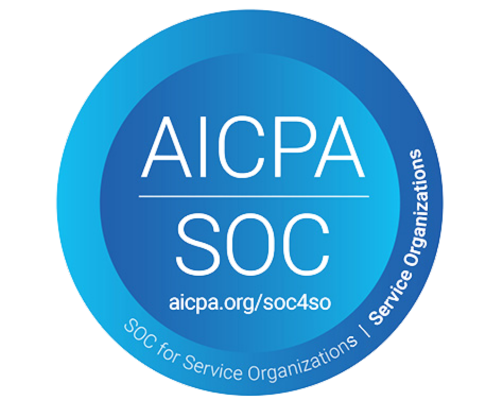How HR Teams Can Effectively Manage Unemployment Claims: Handling Unemployment Claims

Unemployment can be an unfortunate part of the employee lifecycle. To ensure your organization complies with state and federal laws and is assigned the lowest possible unemployment tax rates, your HR team must understand the unemployment insurance claims process.
Throughout the blog series, “How HR Teams Can Effectively Manage Unemployment Claims,” we’re taking a deep dive into the unemployment claims process using insights from a recent Unemployment Tracker webinar.
In our last post,
HRlogics UCM’s
Josh Kendall, Chief Operating Officer, and
Joe Turner, VP of Unemployment Operations, discussed who is and isn’t eligible for unemployment benefits and what qualifies as “willful misconduct” under federal and state law. Here, Turner discusses the unemployment claims lifecycle and how to handle an unemployment claim effectively.
How Does the Unemployment Claims Process Work?
Turner explains that, typically, the life of an unemployment claim is going to start when an employee is separated from your organization. Either they're laid off, they quit, or they're discharged for something other than a lack of work.
Next, the state's going to send a request for information to the employer or their third-party administrator, such as Unemployment Tracker. Every request from the state agency has a deadline and failure to respond timely or without all the specific details related to the separation could forfeit your right to protest the claim any further. You want to make sure you know what the deadline is for that claim and respond to it with as much detail as possible.
Once the state has all the information from the claimant and the employer, they're going to issue their initial determination on the claimant’s eligibility for benefits. They're going to send that out in writing saying the claimant is eligible or disqualified. From there, either party has the right to file an appeal if they disagree with the determination.
What If I Don't Want to Dispute an Unemployment Claim? Should I Even Respond?
According to Turner, “If you don't want to protest an unemployment claim, we're always going to recommend that you at least respond to the unemployment agency with the basic separation data and advise them that you do not wish to protest or provide additional information.”
He adds that even if you don't respond, if the claimant says “I was separated for something that potentially could be disqualifying,” the agency is going to reach back out to you. They're going to call and say, ‘We didn't get anything back from you. Why did this claimant separate from employment?’
“if you don’t want to dispute a claim, you're saving yourself a little bit of time by giving the state notice that ‘here's my basic response and we don't want to provide any additional details.’” Turner adds.
“Ultimately, that lets the state know you are ok with the decision whether or not a claimant is eligible for benefits being based solely on the information that the claimant gives them,” he says.
Keep in mind, even if you tell the agency that you don't want to contest the claim, if the claimant gives them something disqualifying, they can still disqualify the claimant only on their information. “So, really, what you're deciding to do is say ‘we're just not going to give you any of our details,’” he adds.
How Do I Appeal an Employee’s Unemployment Claim?
Turner reminds us that state deadlines are critical to keep in mind because everything in the unemployment process has a state-assigned deadline to it. “Some states will put it right on their form saying ‘this appeal is due by this date. Some you have to calculate yourself, so just make sure that you're keeping in mind what those deadlines are. Again, if you file an appeal beyond the state's deadline, you can lose your right to pursue the case with that with no recourse.”
You want to review the details of the claimant’s separation and the availability of your first-hand witnesses for a hearing to determine if you want to appeal and request that a hearing be scheduled. If you feel you have a good case to pursue with your details and witnesses, take the appropriate steps to get an appeal filed.
“For our clients, we provide an analysis of the case and our recommendations on whether we feel a client should appeal, but the decision is always up to the clients,” Turner says. “We don’t want a client to invest their time in a case that we know is unlikely to be changed based on the details of the case or the specific state laws, but If it’s a case that our client wants to pursue, we file the appeal for them.”
After an Unemployment Claims Appeal Is Filed, What Happens Next?
In some states, there is a redetermination step, which means you do have the opportunity to provide a little more information or clarification on what caused the claimant's separation. Turner adds that they will do a second look at the case and redetermine the person's eligibility by either denying or allowing benefits. Then you can file an appeal and request that a hearing be scheduled.
In the majority of states, filing an appeal to a determination is going to proceed directly to the scheduling of an unemployment hearing. “Once you decide to file an appeal, we always recommend that you go ahead and start to identify and notify the witnesses you would want to have available when the hearing is scheduled,” Turner advises. “Because after you file that appeal, it's going to go to that hearing level. When the hearing is scheduled, they're going to send it out in writing. Unlike other court actions, you may not have a long period to get ready.”
An unemployment hearing is usually going to be scheduled within a couple of weeks from the day they send out that notice, he adds. “So you want to have everybody on alert that a hearing is going to be coming up and then when it's scheduled, you’re going to have to turn around and be ready for it pretty quickly.”
Keep in mind, when that hearing is scheduled, this is your last opportunity to provide the details of the claim of separation, Turner says. “You want to have all the first-hand testimony and details available for the hearing because any appeal beyond that is just a review of what is in the record from the hearing.”
In our next post, we’ll discuss the appeals hearing process in more detail and how you can successfully win an unemployment claims appeal to keep your SUTA rates low.
Can't wait for the next blog in this series?
Watch the full webinar here.
Effectively Manage Your Company’s Unemployment Claims with HRlogics
Let HRlogics UCM (Unemployment Cost Management) take on the administrative burden of managing unemployment insurance claims. Whether you are looking for full-service unemployment claims management — offering a hands-on approach with expert guidance — or looking for self-service software for in-house efficiency, employers gain a reliable partner in the unemployment process.





